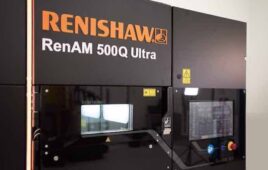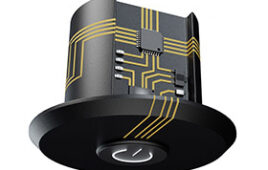3D printing free-standing structures can be a challenge. Robotics maker Festo is trying to solve the problem by looking to insects for inspiration. The 3D Cocooner printer builds structures freely in a 3D space instead of laying down material from the ground up, stringing a “web” of glass-fiber thread gradually into the desired shape.
The nozzle for the Cocooner printer is mounted on a standard Festo automation handling system. The EXPT-45 tripod is a three-armed parallel kinematics system, which is controlled by the handling system. It extrudes glass fiber using a continuously fed, custom-made spinneret.
Inside that spinneret, the soft fiber is rolled over two rollers, coating it with a viscous, light-sensitive resin. The fiber is cured by UV light as soon as it emerges, turning it into a solid rod. A small disk in the spinneret cuts off individual pieces. It can print in a space 17.7 inches by 11.8 inches by 23.6 inches.
Part of the flexibility of the system comes from its ability to modulate the use of UV light. In order to keep some of the resin in a liquid state, to fit between existing pieces of hard-to-reach spaces, it can extrude liquid resin that can be hardened at a controlled time and place.
The software stores the geometric rules that govern the desired object. Its height, width, and rotation can be adjusted using slide controls: although the user needs to specify the parameters, the software’s internal rules calculate the details.
The printer was designed as part of Festo’s Bionic Learning Network, a coalition of researchers including private companies, investors, and universities.
Filed Under: 3D printing • additive • stereolithography, Materials • advanced




